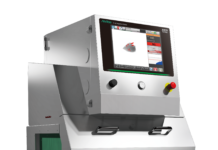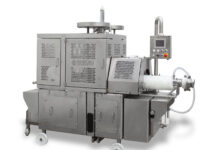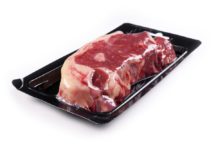Currently there are three trends that are driving the world of meat packaging. The first is a response to the retailers’ requirement to reduce labour costs at the point of sale. The second is the increasing consumer request for high quality, fresh products that are quick and convenient. The third and last trend deals with putting safer foods out into the market. The packaging technologies that are emerging throughout the world to satisfy these requests are mainly focussed on the goal of ready to prepare, safe, pre-packaged foods[1].
Packaging for case ready meats
Centralized packaging is becoming more widespread in the distribution of meat products. Fresh meats are cut and packaged before transport to the point of sale, with the primary goal of reducing the cost of labour at the retail store. Pre-packaging fresh meats is growing in the United States where in 2007 it represented 64% of the market for fresh meat as opposed to 49% in 2002. In Europe the market for case ready meats is expanding at a rate of 15% per year [3], even if in this area there are vast differences among the European countries. In the UK, almost 90% of the market is case ready meats while in Italy it only represents 10% of the market. The guidelines for new packages for case ready meat products are:
1. maximum possible product shelf life;
2. display of the product in the meat case in the best oxidation conditions so as to assure the maintenance of its red colour;
3. a complete package, bearing the label with the product price and expiry date;
4. a package that allows a good view of the meat that it contains and that remains unaltered during the storage time in the meat case.
Packaging technology for case ready meats
The growth of pre-packaging of fresh meats is tightly linked to the possibility of maintaining the product characteristics for the longest time possible. Currently the best considered method for extending the preservation time of meats is modified atmosphere packaging (MAP). Two types of MAP are generally used, one with a high level of oxygen (typically 80% O2) or one with low levels of oxygen (generally lower than 0.05%), as opposed to the normal atmospheric levels that contain 23% oxygen.
• High oxygen modified atmosphere packaging
At this time, high oxygen MAP is more widely used and consists of a package that contains a modified atmosphere made up of 80% oxygen and 20% carbon dioxide (CO2). The O2 allows the longest possible maintenance of the red colour of the meat in the package, while the CO2 acts as a bacteria blocking agent [4]. The package consists of a barrier tray made of polystyrene, polypropylene or polyethylene, completed wrapped with a barrier film. The only disadvantage of this type of package is that once the product is exposed to light at the point of sale, the shelf life, depending on the type of meat, is only 2 to 4 days from the time that the elevated levels of O2 begin to promote oxidation of the lipids.
• Low oxygen modified atmosphere packaging
This packaging system normally contains an atmosphere made up of a very low oxygen levels, less than 0.05% and starting at a 20% level of CO2. The packaging consists of a tray wrapped with film, both barrier materials. The advantage of this type of packaging is that the shelf life of the pre-packaged meat with low oxygen has a longer shelf life than that with a high oxygen MAP, ranging from 5 to 10 days depending on the type of meat. This extended life is due to the delayed oxidation process inside the package. A precise storage temperature and elevated hygienic conditions are required to guarantee the extended shelf life. In the low oxygen category of packaging, there is also MAP packaging with carbon monoxide (CO) with a mix of 20% CO2, starting at 0.4 % CO and 0.5% O2. Carbon monoxide is used to extend the shelf life of the meat to a range of 5 to 10 days. It is expected that with the recent regulations in the United States, the use of carbon monoxide packaging for fresh meats will be more wide-spread than low oxygen packaging. Even though there is a shelf-life advantage with CO, consumers generally have a negative attitude towards this gas due to its toxic hazard. This has slowed the use of CO in the packaging industry. In addition, this type of packaging has a disadvantage in that is can mask the deterioration of the meat so that the product appears to be fresh even if it has already begun to spoil. To avoid this, it is strictly mandatory to indicate the expiry date in a CO modified atmosphere package. The major advantage of this packaging is that the shelf-life is greater than that of a high oxygen package, in fact 5 to 10 days.





